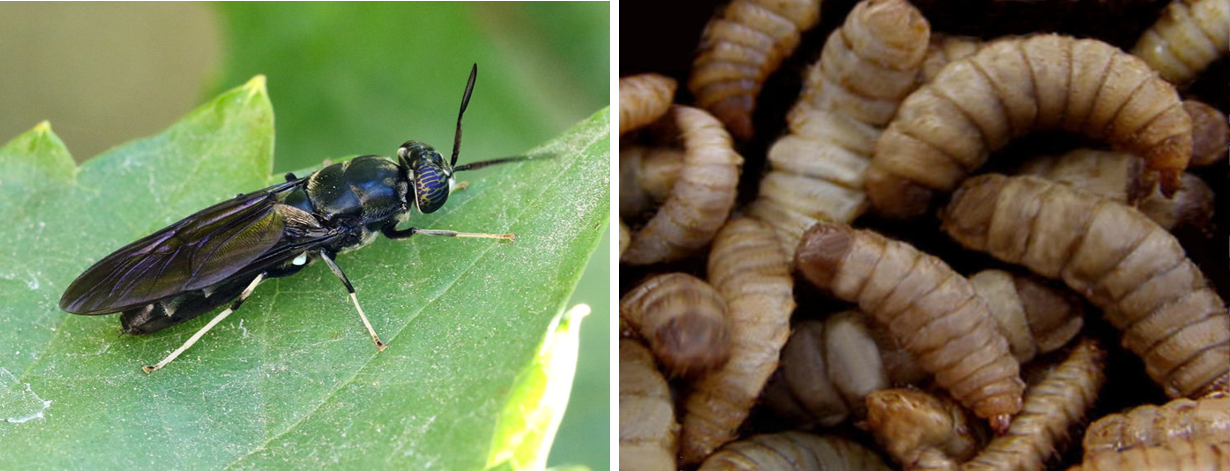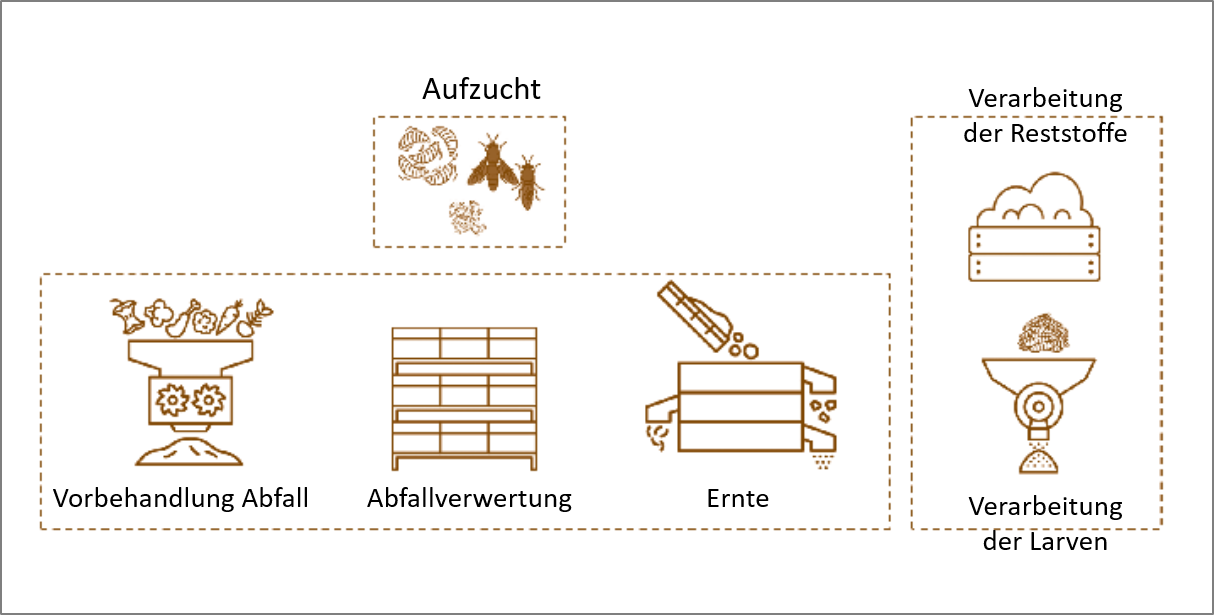4. Insects as protein source
| Site: | Hamburg Open Online University |
| Course: | Process engineering for the bioeconomy |
| Book: | 4. Insects as protein source |
| Printed by: | Gast |
| Date: | Wednesday, 10 December 2025, 10:57 PM |
Description
In this book, you will learn how insects can be used asan advanced source of proteins.
4. Insects as protein source
Why Insects?
Recently, there have been more and more reports and projects on the production of food and feed from insects. Of course, there are a few things to bear in mind if a certain type of insect is to be bred on a large scale, which should not lead to undesirable side effects. You can find out what is behind this and how it works below.
If the world's population continues to grow, but land and water resources remain the same, there will eventually be a shortage of food. One idea to counter this and produce a large output of nutrients with as few input resources as possible is the production of proteins and fats with the help of insects.
However, the breeding and alternative use of insect proteins only makes sense if organic waste rather than staple foods is used for their breeding. The Black Soldier Fly is therefore being researched in many projects and is considered a promising candidate for commercial use (Fraunhofer 2019, DBFZ 2021).
However, the most promising area of application for insect proteins at the moment is the animal feed market, as there tend to be reservations and defensive reactions against insects when it comes to food for human consumption, especially in Western societies. In Asia or Africa, however, it is quite common to eat insects.
However, insects are very suitable as animal feed, as they are already on the menu of many species (e.g. chickens, predatory fish, pigs). For example, experiments have been carried out that demonstrate that replacing conventional feed, e.g. from soy or fishmeal, in chicken farming has a positive effect on both meat quality and the economic result (Kim et al. 2019). However, the use of farmed insects as animal feed, e.g. for exotic pets and zoo animals, is nothing new.
Species whose suitability as a basis for protein production has already been well documented or is already being practiced:
Black soldier fly (Hermetia illucens), beetle larvae (e.g., Large black beetle), Mealworms, Silkworms, Grasshopper
4.1 How does it work?

Using the example of the black soldier fly (Hermetia illucens), the method of rearing and further processing will be explained. A detailed description of the process can be found in Dortmans et al. (2021).
The advantage of this fly species is that the larvae prefer to feed on organic residues and are therefore very well suited for the utilization of waste from the food industry. Their larvae have a high protein (35 %) and fat (30 %) content. No highly specialized and expensive technological equipment is required for breeding.
The soldier fly is found in tropical and subtropical regions. The larva develops within 14-16 days. The finished flies do not feed and only live for about a week, during which they mate and lay eggs again.
The following conditions should be created for breeding:
- sufficiently warm: 24-30 °C
- no direct solar radiation
- sufficient water content of fodder: 70-80 %
- sufficient nutrient content in fodder: protein rich and high share of easily accessible carbohydrates, no toxins
- sufficiently chopped fodder
Shortly before pupation, when the larvae have reached their maximum weight, they are harvested. The waste residues and the larvae must be separated from each other. If the material is dry, this can be done by sieving, for example. The live larvae can already be sold as animal feed. If they are sold dead or processed further, they must first be cleaned and disinfected. This is done briefly with hot water, which kills the larvae. They must then be quickly processed into oil, flour or pellets so that they do not spoil.

The following methods can be used for the extraction of proteins:
Subcritical water extraction
- is carried out at temperatures between 100 and 374ºC
- Water is kept in a liquid state by pressure changes
- the density and viscosity of the water decreases and the hydrogen bonds are weakened
- Water now acts as an organic solvent and promotes depolymerization and the formation of smaller soluble protein fractions and amino acids
Dry fractionation
Cleaning, grinding, breaking up the cells and subsequent separation of starch particles and proteins according to their size difference and density
Alkaline extraction
Treatment in the alkaline range (e.g. sodium hydroxide) breaks down the cell wall and extracts the protein. The extractability of proteins is influenced by the ratio of biomass to solvent, temperature, time and pH value.
The following methods can be used for the extraction of fats:
Folch extraction
By adding chloroform and methanol in a ratio of 2:1, the proteins precipitate. The liquid phase contains the lipids. They are then obtained by centrifuging and aspirating the lighter upper phase with the solvent.
Further possibilities:
- Soxhlet extraction
- Supercritical CO2- Extraktion